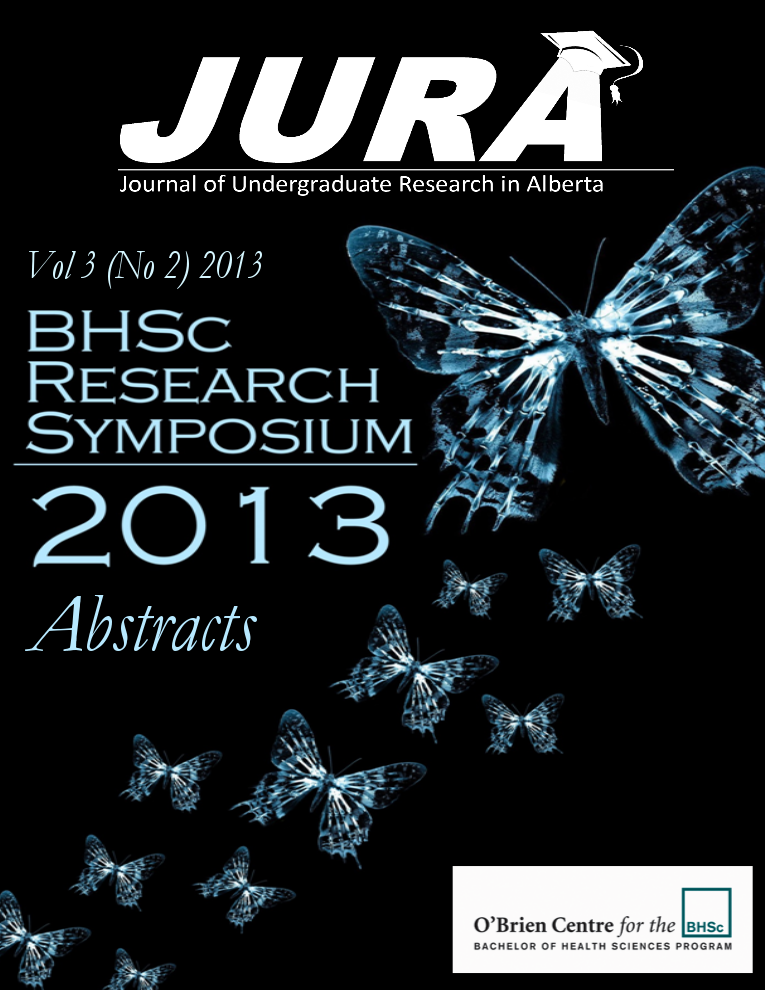Epidemiology Of Imported Plasmodium Falciparum Infections In Returning Travelers To Calgary, 2007-2012
Keywords:
malaria, falciparum, imported, epidemiologyAbstract
INTRODUCTION
Malaria, an infectious disease transmitted by the anopheles mosquitoes, contributes to the significant morbidity and mortality in the tropics - it is responsible for over three million annual deaths1. With the increase in intercontinental travelling and immigration, there has been a notable rise in the number of malaria cases in industrialized countries2. The most prevalent imported malaria cases are caused by Plasmodium falciparum species, which is also responsible for the most virulent and lethal malaria infections in humans1. Calgary is the fourth largest Canadian city to have the highest number of immigrants, who consisted 30% of the total city population in 20103. On average, sixty to hundred malaria cases are reported annually in Calgary as determined by the local diagnostic laboratory3. However, little is known about the epidemiology of the patients, such as travel history, type of prophylaxis taken and the causative Plasmodium species. Therefore, the aim of this retrospective study was to determine whether returning travellers to Calgary are vectors of drug-resistant strains of malaria and thus a critical sentinel of emerging resistance in other parts of the world.
METHODS
The study group comprised of patients who were positive for P. falciparum malaria between 2007 and 2012 with travel history to endemic countries. The following information was collected: pre-travel advice, reason for travel, countries with malaria visited, types of prophylaxis taken and treatment. The data were entered and stored on the Microsoft Access database. From this, the following epidemiological data were collected: gender, age, geometric mean parasitemia and parasite clearance rate. The data were calculated using SPSS, Microsoft Excel and Parasite Clearance Estimator tool by WWARN.
RESULTS
Between 2007 and 2012, a total of 209 cases were laboratory-confirmed in Calgary. The 58.6% of the cases were caused by P. falciparum with 119 reported cases where 68.9% were seen in males. The mean age of P.falciparum infected males was 32.5±14.1 and females, 26.5±15.0. The parasite clearance rate of eligible patients ranged from 0.0269 to 0.578 (n=31). The highest GMP of 0.878 was observed in 2007. A majority of travellers received pre-travel advice (61.3%), but 38.7% of infected patients had not taken prophylaxis. Almost a half of the patients (47.5%) were VFR travellers. Most P. falciparum infected patients had travelled to at least one country in Africa.
DISCUSSION AND CONCLUSIONS
During the 2007 and 2012 period, there was a moderate increase in the number of P. falciparum cases, with alternating increases and decreases each year. A linear regression performed by SPSS showed that there is a non-significant (p=0.149) but a moderately increasing trend (r=0.514) in the number of P.falciparum cases over the six years. Based on the results, the majority of patients infected with P. falciparum were, therefore: males aged 30-39, travelled to Africa to VFR, did not seek pre-travel advice, did not take prophylaxis and had an average parasite clearance rate of 0.116±0.101. One limitation of this study is the estimation of parasite clearance rate, in which the tool developed by WWARN had very specific requirements and reducing the number of eligible patients to 31.
Downloads
References
Snow R, Guerra C, Noor A, Myint H, Hay S. Nature. 2005; 434: 214-217
Lee C, Gregson D, Church D, Laupland K, Eckhardt R et al. Plos ONE. 2013; 8(4): e60751.
Flegg JA, Guerin PJ, White NJ, Stepniewska K. Malaria Journal 2011; 10:339.
Downloads
Additional Files
Published
Issue
Section
License
Authors retain all rights to their research work. Articles may be submitted to and accepted in other journals subsequent to publishing in JURA. Our only condition is that articles cannot be used in another undergraduate journal. Authors must be aware, however, that professional journals may refuse articles submitted or accepted elsewhere—JURA included.


